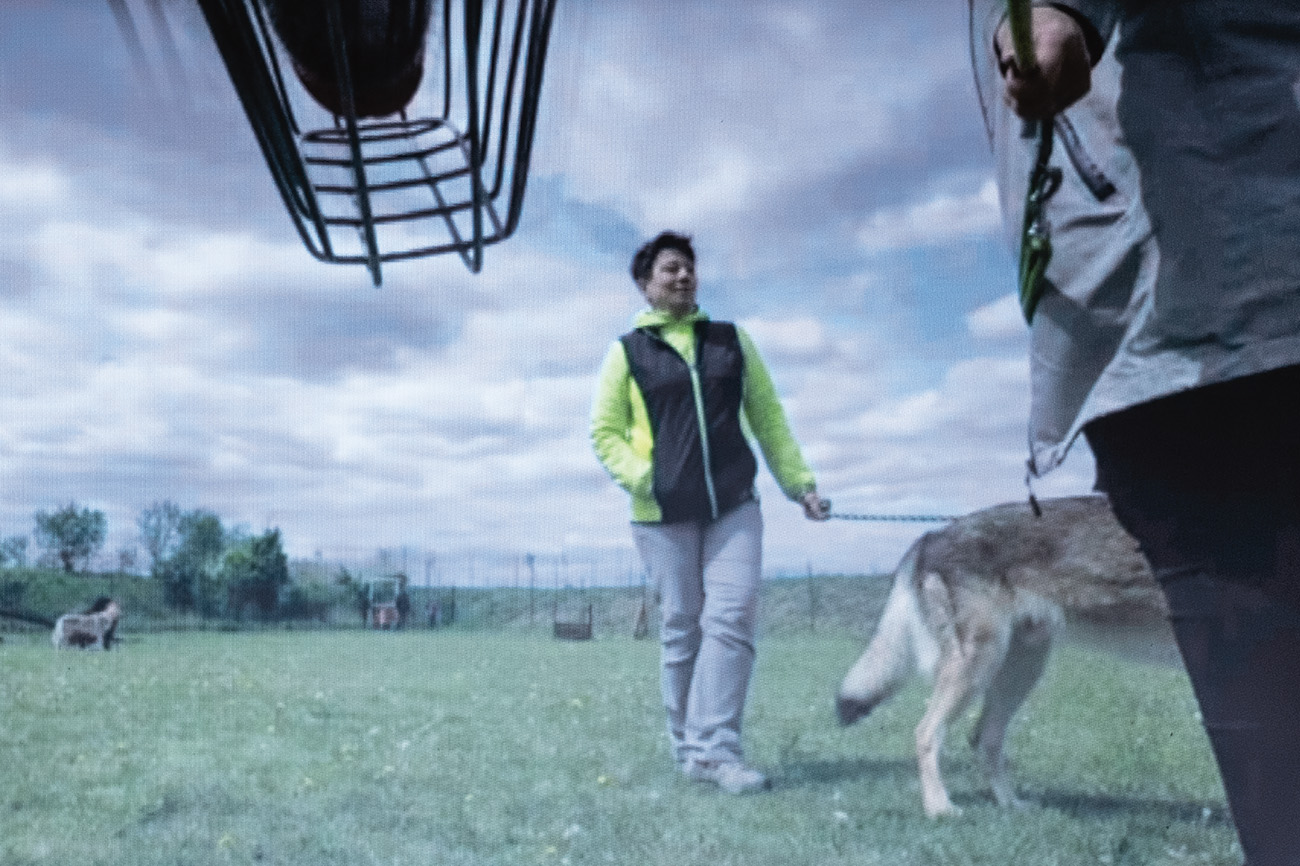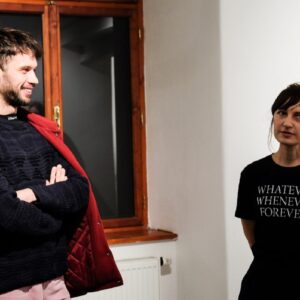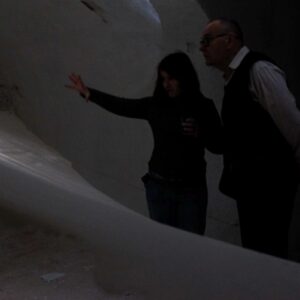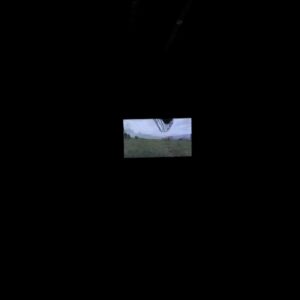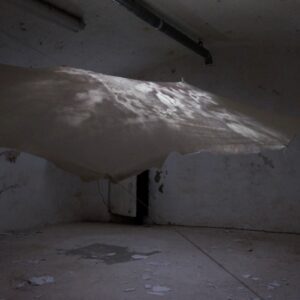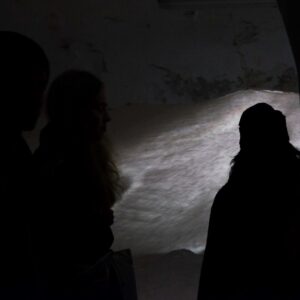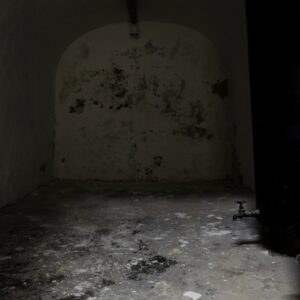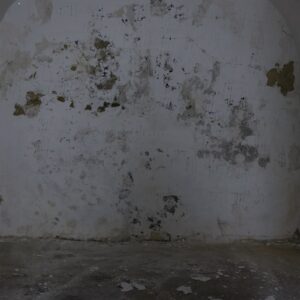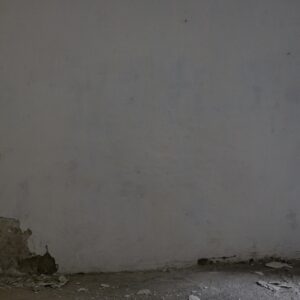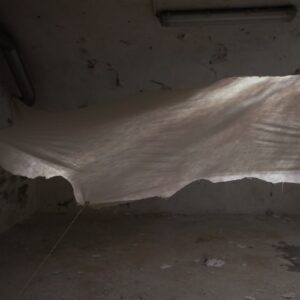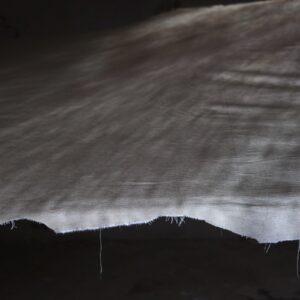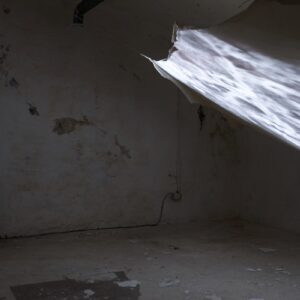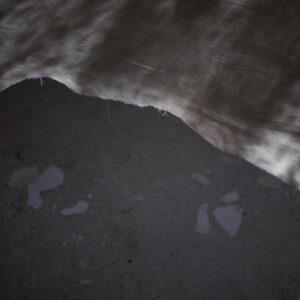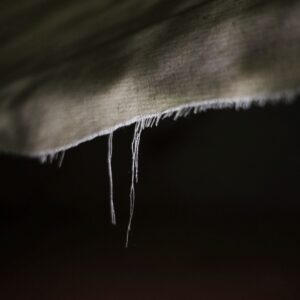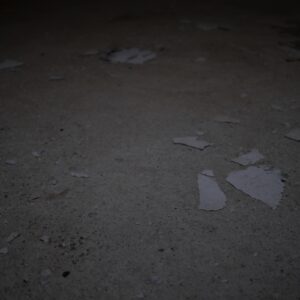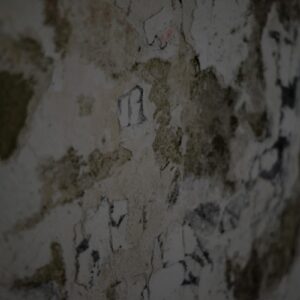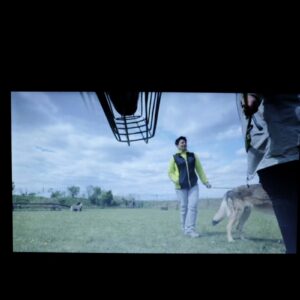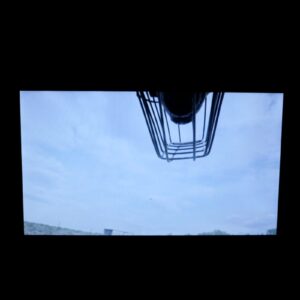Information
Curator
Zuzana Janečková
Opening
28 November 2019, 6PM
Duration
29 November 2019 – 26 January 2020
Venue
Bunker
Download
Dog’s name. Breeding stations. Gender. Date of birth. Reference number. Place and date of the breeding test.
A breeding test card records data about dog’s individual physical and behavioural characteristics which indicate whether it is a breeding specimen. Most of the specifications on the list are assigned negative points for every imperfection observed. If we were able to imagine the animal that would be in accordance with the breeding test measuring precision, we would come up with a dog that would always listen, but never hear anything.
A Height. B Testicles. C Teeth. D Head. E Eyes. F Ears. G Neck. H Body. I Forearms. J Hind legs. K Tail. L Hair. M Colour. N Movement. O Response to trainer’s attack. O Response to measurement taking. R Type. T Genitalia pronouncement. P Compliance with standards. S Response to gunfire.
In 1956, the chief of the Border Patrol’s cynology department came up with an idea to crossbreed the Carpathian wolfs with German Shepherds in order to create a resilient service dog, improved and strengthened with wolf blood, that would be able to serve in the rough climate border areas. The breeding of the wolf Brita with the German Shepherd Caesar produced five puppies who became known as members of the first phase, F1. The half-dogs, but still too much of wolves, were not suitable for service at the border. By pouring in more and more German-Shepherd blood (how the zoo technicians call it) and selecting specific individuals, they are able to get to F4, an animal which was 1/16 wolf. The crossbreeds of these dogs have been known as the Czechoslovak Wolfdog.
Brita, Bety, Barka, Hron, Ero, Urta. Brita, Berta, Osa, Kača, Grin, Šerik, Chyzma. Brita, Bikar, Sito, Odon, Žarka.
French philosophical mythology interpreted “becoming an animal” as the opposite of domestication, as breeding within the pack, escaping the too tight categorical pen of man, becoming wild and wolf-like. This point of view describes the dog as a victim of settling down, a traitor of the pack. [1] Within the historical context of the last few centuries of the man-dog relationship, the notion of “becoming” a dog has a completely different feel to it. Reevaluation and standardisation of the term of breeding in Victorian England resulted not just in the creation of the first breeder communities, but also in the perhaps unintentional confirmation of creating manmade breeds.[2] The creation of the modern dog was a result of a whole range of processes and operations which included standardisation of the members of the same breed, differentiationof individual breeds and multiplication of their volume, immortalisation of dog bodies chopped up into numbered parts and their resulting deification.[3] A thorough research would show how the then newly established notion of breeding dogs reflected the period’s social classes, gender roles, races and nationalities. It all resulted into the world heritage of incarnated taxonomies and materialised classifications.
When we start researching domestication techniques, we will realise there is a contradictory process in motion, one that presents nature as something not given, but rather something gradually created. It is not far from artificial naturalisation which incorporates delusional ideas of purity and origin where individual breeds achieve higher status and provide the perfect specimen used for comparison. The origin of the species had to be produced, just like the origin of man who started to differentiate from animals when he mastered language. Animals are the first metaphor when it comes to the origin of language.[4] Animals are used in various comparison statements and proverbs, whether it is to highlight the abilities of mankind or to diminish them. It is not enough to just deny anthropocentrism, unless there are no negative anthropomorphic outlines left that will be just as long-lasting, but even more out of reach. It is worth trying to study, establish and cultivate relationships between man, the mankind and other species, just like between various centres, peripheries and borders.
They say the Czechoslovak Wolfdog was not suitable for Border Patrol service. However, instead of protecting the borders of a now non-existent country, they have become popular among civilians which led to the official recognition of their breed. Nevertheless, they do not represent the border between the wolf and the dog. They are born from a hole in the border, they become transducers between the decaying border of nature and culture, the natural and artificial, the human and inhumane. By watching them, we can take a look at the borderlines of cruelty and care, when cruelty is a result of caring and caring includes a lot of cruelty. At the same time, it offers enough room between human intention and dog motivation, human will and laws of nature, unrestricted human freedom and limited natural resources.
However long humans and dogs have been living together, the specific case and circumstances that led to the creation of the Czechoslovak Wolfdog should help us improve our much needed sensitivity when it comes to crossbreeding organisms and technologies. While the dogs bred in southern Bohemia in order to protect the border lined with electric fences never really served well their purpose, the deer of Šumava, thanks to their educational nature, still do not cross the former border lines even though it has been years since the wires were removed from the area.[5] Electric wires weaken deer, roe deer and livestock’s sensitivity to the Earth’s magnetic field so they does not follow the respective field lines as they are used to, according to researchers from the University of South Bohemia.[6] In some parts of Šumava, bore hunters check their kills with dosemeters to verify their radiation levels as the bores have been eating underground mushrooms infused with Chernobyl caesium which has probably decayed by about a half at this time.[7] All of the cases include processes of domestication and brutification that create both human and animal bodies, just like the country, one of the bodies of the world, they occupy together.
Vojtěch Märc
[1] B 10 both stunted.
[2] D 5 heavy head. D 7 light head.
[3] Q m very shy with attenuation. Q n very timid with an escape reaction. Q r friendly, calm or playful. Q u very dominant, hard to control.
[4] L 3 hairless inside the ears.
[5] E 7 multiple colours. E 9 watering eye.
[6] M 3 dark grey. M 14 atypical.
[7] K 12 deformed. K 14 atypical.
